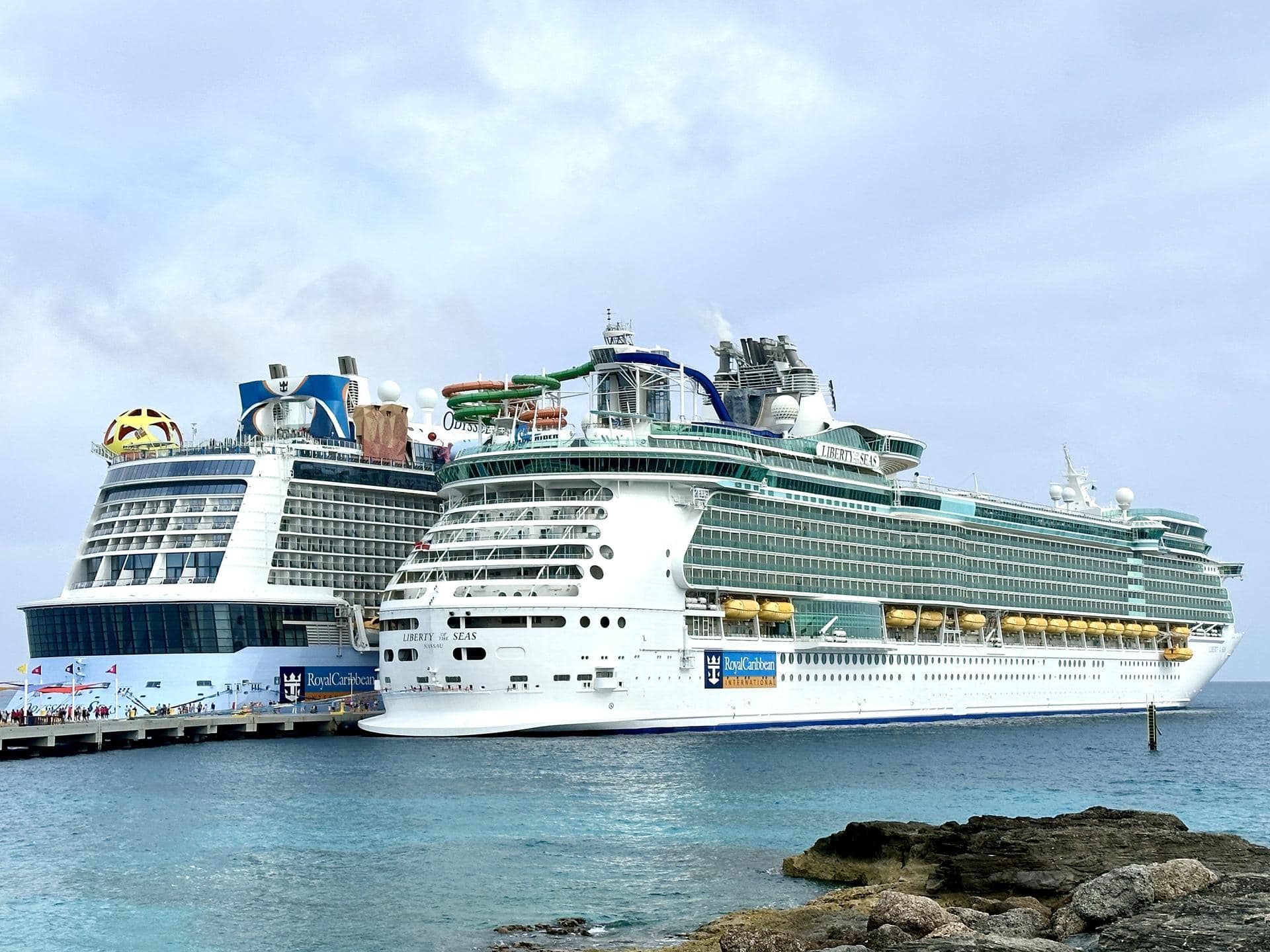When it comes to planning a cruise, one of the first things people often ask is, “How much is this going to cost me?” If you’ve asked yourself that same question, you’re not alone. Cruises can feel like a mysterious mix of “all-inclusive” promises and hidden expenses waiting to surprise you once you’re on board. But don’t worry—I’m here to help you break it all down, piece by piece, so you can budget with confidence and focus on what really matters: having the time of your life on the high seas.
Let’s dive in (pun intended) and explore the true costs of cruising so you can make informed decisions without feeling overwhelmed.
1. The Base Fare: What’s Included?
When you browse cruise prices, the numbers you see advertised are typically the base fares. These fares often cover:
- Your cabin (more on cabin options later).
- Standard dining options, including buffets, main dining rooms, and sometimes room service.
- Onboard entertainment, like live shows, trivia nights, and poolside activities.
- Access to basic amenities, such as pools, gyms, and lounges.
Sounds great, right? But here’s the catch: The base fare is just the starting point. It’s a bit like buying a car—sure, the advertised price looks appealing, but add-ons and extras can pile up quickly.
2. Cabin Choices: Location, Location, Location
Not all cabins are created equal. Your choice of cabin can significantly impact the overall cost of your cruise. Here’s a quick rundown of your options:
- Interior Cabins: The most budget-friendly option. These rooms don’t have windows, which might not be ideal if you’re prone to claustrophobia. But they’re great if you plan to spend most of your time exploring the ship.
- Oceanview Cabins: These come with a window or porthole, letting you catch a glimpse of the sea. They’re slightly pricier than interior cabins but worth it if you love a view.
- Balcony Cabins: Perfect for privacy and enjoying the ocean breeze. Expect to pay a premium for this option.
- Suites: The most luxurious (and expensive) choice, often including added perks like priority boarding, exclusive dining options, and concierge services.
Pro Tip: Don’t forget to factor in cabin location. Midship rooms are less prone to motion, while rooms near elevators or common areas can be noisy. Learn much more about cabin room selection here.
3. Taxes, Fees, and Port Charges
Cruise fares often don’t include taxes, fees, or port charges. These mandatory costs can add anywhere from $50 to $250 per person, depending on your itinerary and cruise line. These charges cover things like:
- Government taxes.
- Docking fees at various ports.
- Environmental levies.
Always make sure you know if these costs are included before paying or check the fine print when booking to avoid sticker shock later.
4. Gratuities: The “Tip” of the Iceberg
Most cruise lines automatically add daily gratuities to your account, usually ranging from $15 to $20 per person, per day. This covers tips for the hardworking crew members who clean your cabin, serve your meals, and keep the ship running smoothly.
If you’re traveling as a family, these gratuities can add up quickly. For example, a family of four on a 7-day cruise might spend $420 in gratuities alone. Some cruise lines allow you to prepay gratuities when booking, which can make budgeting easier.
5. Dining and Beverage Options: What’s Included or Extra?
While many cruises include standard dining options, some lines go above and beyond by including specialty dining, Wi-Fi, and beverages in their packages or as part of their base fare. For example:
- Specialty Dining: High-end restaurants like steakhouses, sushi bars, or French bistros are sometimes included in premium packages or on luxury lines. For other cruise lines, they may come at an extra charge ranging from $20 to $50 per person, per meal.
- Beverage Packages: Some cruise lines include alcoholic drinks, specialty coffees, and sodas with their fares, especially if you book into a higher-tier cabin or take advantage of a promotional deal. Others allow you to add a beverage package, which typically costs $50 to $100 per person, per day.
- Wi-Fi: Wi-Fi packages are often an extra charge, but some lines, like luxury or newer ships, include basic or premium Wi-Fi access in their fares or promotions.
Pro Tip: Pay attention to promotions like “Drinks on Us” or “Free Wi-Fi” when booking. These can save you hundreds of dollars. Also, your travel agent might be able to see promotions available that are not public. Ask for the best options!
6. Onboard Credits: A Game Changer
Onboard credits (OBCs) are essentially “cruise cash” you can use for various expenses while onboard. Many cruise lines offer OBCs as part of promotions, especially during wave season or if you’re booking through a travel agent like The Trip Bookie.
Here’s how OBCs can save you money:
- Use them for excursions to get free or discounted adventures at your ports of call.
- Apply them to specialty dining, drink packages, or spa treatments.
- Cover Wi-Fi or onboard shopping expenses.
Some savvy cruisers manage to cover most, if not all, of their onboard spending with these credits, dramatically reducing the overall cost of their vacation.
Bonus Tip: Working with a travel agent like The Trip Bookie can often get you extra onboard credits not available on public websites. Agents have access to exclusive deals and promotions, ensuring you get the best value for your money.
7. Excursions and Shore Activities
Exploring ports of call is one of the best parts of cruising, but it’s also where costs can climb quickly. Excursions arranged through the cruise line typically cost $50 to $200 or more per person, per activity, depending on what you choose—whether it’s a snorkeling adventure, city tour, or cultural experience.
To save money, consider:
- Use your onboard credits to offset excursion pricing. Again: Ask your travel agent for mo’ money!!
- Booking excursions independently (but be careful and also mindful of the ship’s departure time!).
- Exploring ports on your own by walking or using local transportation.
- Choose free or low-cost activities, like beach days or self-guided tours.
- Remember, unless it’s in your package, food and beverages cost additional on shore.
8. Onboard Extras and Splurges
Cruise ships are floating resorts, packed with opportunities to spend more money to have additional experiences. You won’t have a dull moment – unless you choose to have some down time and relax! Here are some extras you might encounter:
- Spa Treatments: Massages, facials, and other treatments can range from $50 to $200+.
- Fitness Classes: Yoga, Pilates, and spin classes often have additional fees.
- Shopping: Duty-free shops onboard sell everything from jewelry to souvenirs.
- Casino: Gambling is a popular activity, but it’s easy to lose track of your spending.
- Photos: Professional photographers capture your trip, but prints can cost $10 to $20 each.
- Luxury Activities: If your ship offers premium wine tasting events, glass blowing, chef experiences, ice skating, there will be an additonal cost.
- High Adrenaline Activities: If you are on a super ship with a roller coaster, go-carts, robotic gondola pod, robotron ride, skyride cycle, or iFly indoor skydiving, it is likely that there will be additional fees to participate in those activites.
9. Wi-Fi and Connectivity
Staying connected at sea isn’t cheap. Wi-Fi packages on cruises can range from $10 to $30 per day, depending on the speed and coverage. However, some cruise lines include Wi-Fi in their fares or offer promotional deals, especially for premium cabins or loyalty program members. ASK me about the deals for this!
10. Travel Insurance
While not mandatory, travel insurance is highly recommended. Policies typically cost 5-10% of your total trip cost and cover things like trip cancellations, medical emergencies, and lost luggage. Cruise lines often offer their own plans, but you can also shop around for third-party options.
11. Transportation to the Port
Finally, don’t forget the cost of getting to and from the cruise port. Whether you’re flying, driving, or taking a train, these expenses can add up. Be sure to factor in:
- Flights or gas.
- Hotel stays if you arrive a day early (always a good idea to avoid last-minute travel delays).
- Parking fees at the port.
- Transfers to and from the ship.
Wrapping It Up
Cruising can be one of the most enjoyable and convenient ways to travel, but understanding the true costs upfront is key to avoiding surprises. By breaking down each component of your trip, you’ll have a clearer picture of what to expect and can plan accordingly.
So, whether you’re dreaming of a Caribbean escape, an Alaskan adventure, or a European river cruise, remember that a little preparation goes a long way. And as always, if you need help planning or have questions, I’m here for you. After all, I’m Chris Ordway, The Trip Bookie—your go-to guide for smooth sailing and unforgettable travel experiences. Bon voyage!
Chris Ordway, The Trip Bookie

